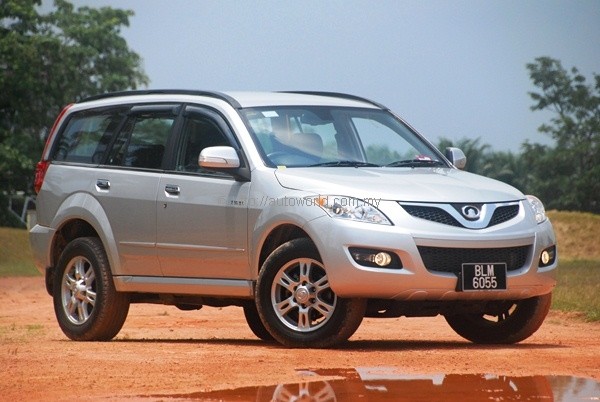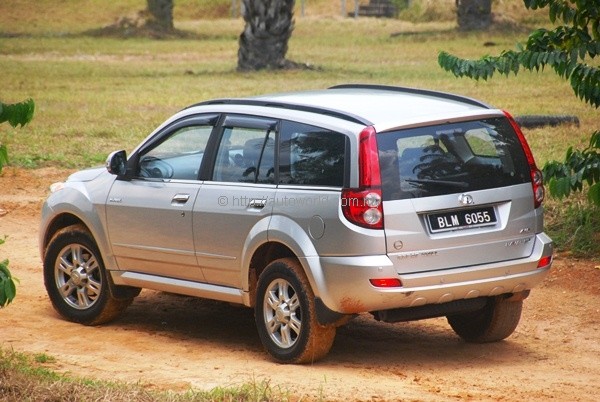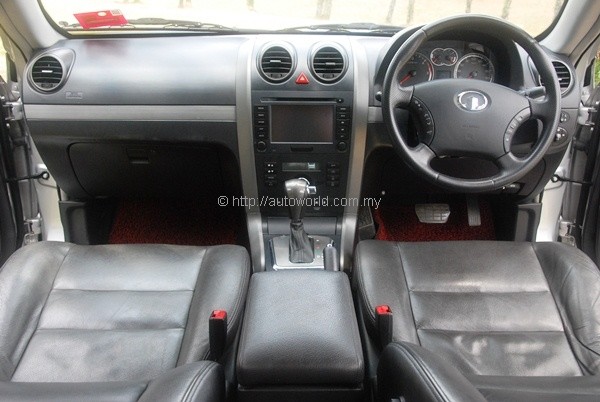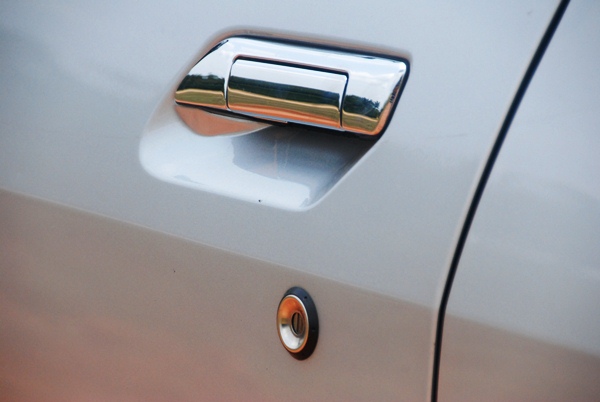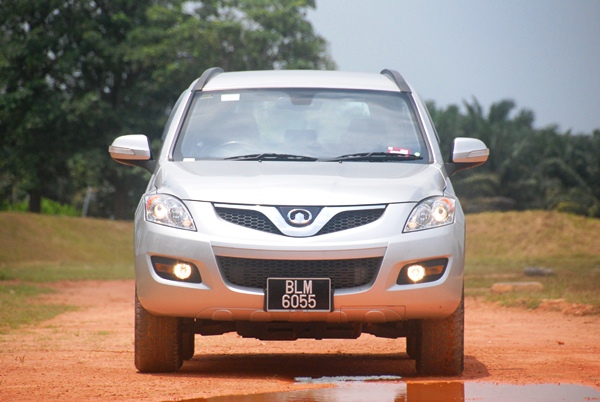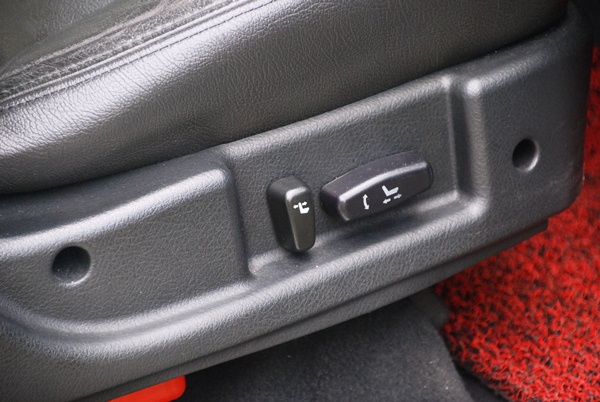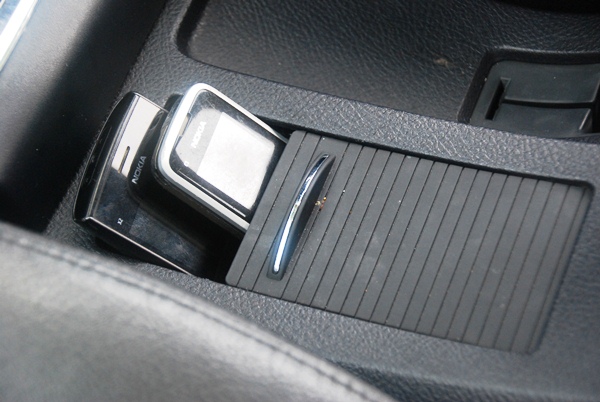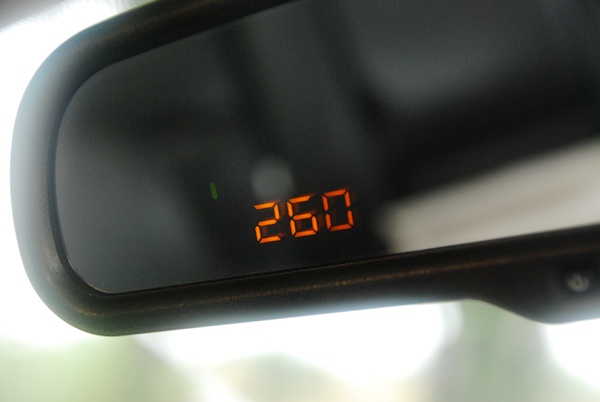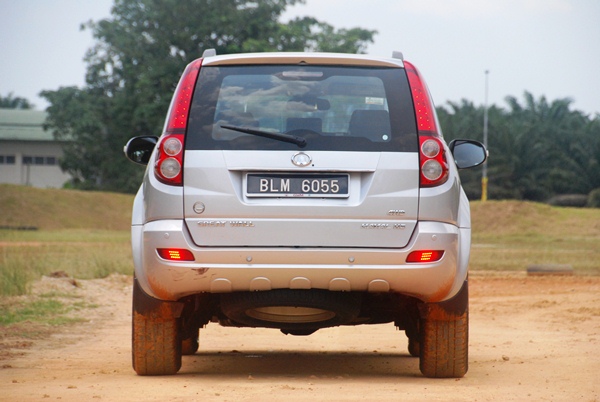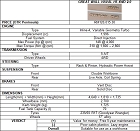Great Wall Haval H5 Test Drive Review
The overwhelming perception on China’s manufacturing industry is that of outrageously cheap products made with little regard for quality, and even less originality. The Chinese are extremely adept at reverse engineering, and stories go that if you give them a sample product, they will have a working duplicate ready for production in two weeks at half the cost with twice as many features.
Problem with Chinese products, however, is that most fall short in the aspect of quality. A car that painstakingly reproduces the appearance of, say, a Mercedes C-Class, does not go the extra mile to reproduce the quality and refinement of the original product. This kind of shoddy handiwork, and there too many such examples around, have ensured that Chinese products continue to be mired in stigma, sitting right at the bottom of the desirability scale.
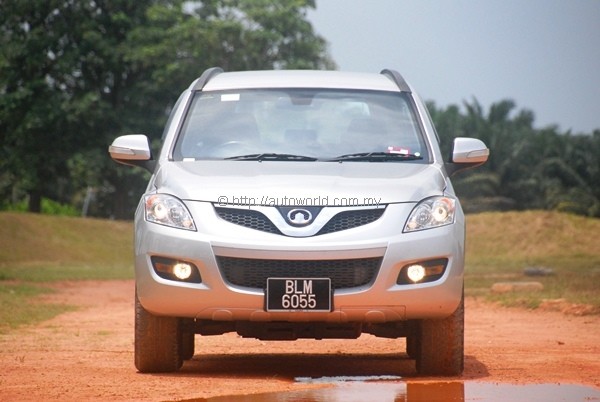 |
| Front styling reminds us of the Mazda CX-9 |
Most people buy Chinese products simply because they are the cheapest things around, and once they break, you get rid of them and replace them with new ones. Such thinking may work well with a toaster, but cars are a lot more expensive, and you don’t just throw a car away if, for example, its gearbox fails.
It is not that the Chinese are incapable of building things that last – the First Emperor’s Terracotta Army and his Great Wall, for example, remain intact even after 2,000 years – but quality comes at a price, and when a full-sized SUV like the Great Wall Haval H5 can be parked on your doorstep at RM120k with insurance, some compromises can certainly be expected. Bear in mind that most SUVs of equivalent size – namely the Ford Everest, Mitsubishi Pajero Sport, and Toyota Fortuner – cost RM160k or more.
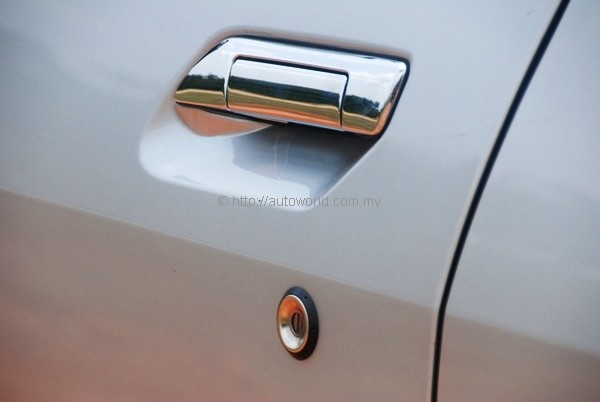 |
| These door handles seem to have originated from the 1980s. |
Indeed, as you inspect the Haval up-close, you find that a lot of its cost-driven compromises are not just expected, they are very obvious. The door handles, for example, seem carbon copied from the Toyota Corolla KE70 of the 1980s, and its cabin, both in the aspect of design and material selection, is unlikely to have made the cut even in Korean vehicles made two decades ago. It nevertheless feels durable, and despite 40,000km of obvious abuse, our test car hardly had rattles or squeaks of any kind. The only sources of noise on the move were caused by lack of refinement rather than things falling apart.
So, what exactly do we have here with the Haval? Well, it is a proper ladder-frame SUV with a diesel engine and a two-mode electronic four-wheel drive system. The rear half of its 4WD system consists of a live axle, although you do get coils rather than leaf springs to hold the axle in place. Front suspension utilizes the double wishbone with torsion bar setup. Steering is a hydraulic power assisted rack & pinion system. These underpinnings are ingredients for decent off-roading competence.
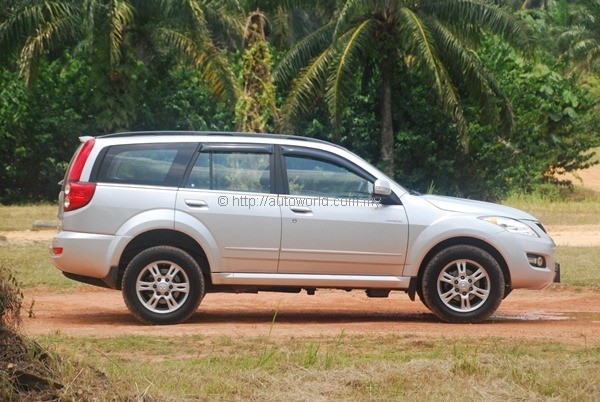 |
| The Haval is ladder-frame based, and must be compared with the Ford Everest and Toyota Fortuner. |
Powering the Haval is a Euro IV compliant 2.0-litre variable geometry turbodiesel engine making 148hp @ 4,000rpm and 310Nm @ 1,800 – 2,800rpm. The numbers are promising on paper, but the reality is that the engine needs to be worked way beyond that 1,800-2,800rpm zone where its peak torque supposedly resides. The engine is lazy below 3,000rpm, although once past that point, brisk progress can be coaxed.
A top speed of 160kph is possible, but the Haval feels most comfortable at much slower speeds. Let’s just say that this car won’t give you any problems with the AES cameras. Gearing of the 5-speed automatic transmission is rather short, as 2,000rpm on the tacho summons no more than 80kph on the speedometer.
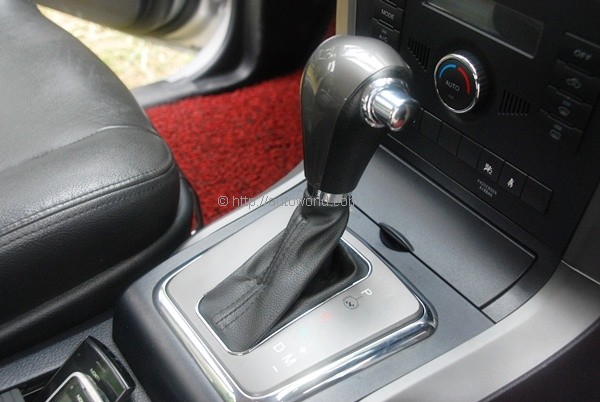 |
| 5-speed automatic transmission with manual overriding feature. Not bad. |
Chassis setup is actually rather impressive, with high speed stability and ride quality both being notable highlights. Despite the engine’s struggles, the Haval is surefooted at its v-max, and road harshness are absorbed with such impressive competence that is barely believable. Give it a break at the corners though, it can’t cheat the laws of physics.
Take it off road, and you will be surprised at the kind of beating that the Haval can take. Although we won’t recommend a jungle expedition in this car yet, we expect that the Haval will competently tackle the demands of construction sites, mines, and estates. There is a prevailing sense of ruggedness coming from its chassis, and the amazing pliancy of its suspension makes it extremely suitable to be used as a workhorse that you can punish without remorse.
 |
| Leather upholstery not of the plushest quality, but they do appear rugged and durable. |
Public stigma towards Chinese products is an unfortunate reality that the Haval and its compatriots will have to bear with for quite some time to come. This in turn affects residual values, and if you’re looking to sell your Haval in say, three or four years down the road, chances are that you would be very badly burnt by depreciation. The Haval must therefore be considered as a long term ownership preposition, and motivating you in that direction is an excellent 5-year / 200,000km after sales plan that provides a complete warranty and free service covering parts, consumables, and labour.
It is difficult to recommend you the Haval if you are seeking for a personal mode of transport, but for commercial buyers seeking a workhorse for more practical purposes, the case is a bit more compelling. It’s mechanical underpinnings are way better and tougher than what you would expect and few vehicles offer as much space and equipment at RM120k. It is a rather honest vehicle, and Great Wall’s comprehensive after sales coverage makes this a product worth serious thought.
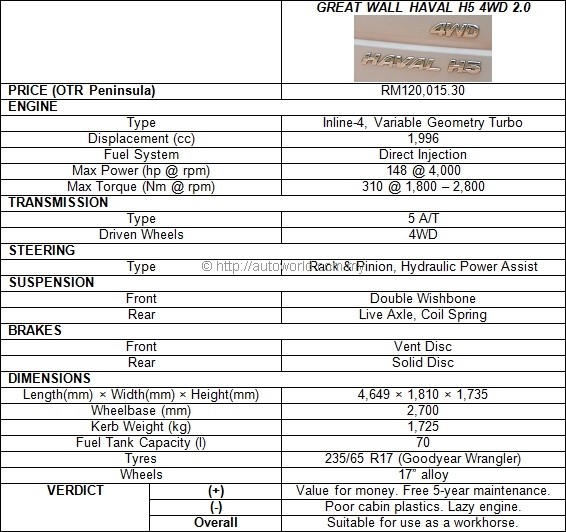 |




